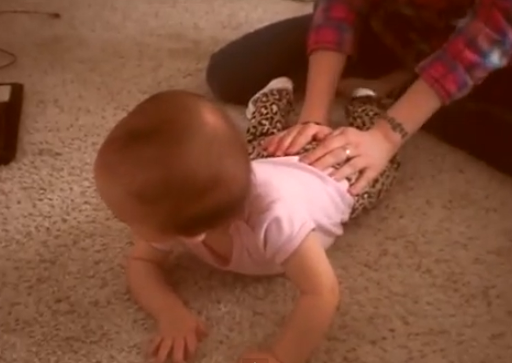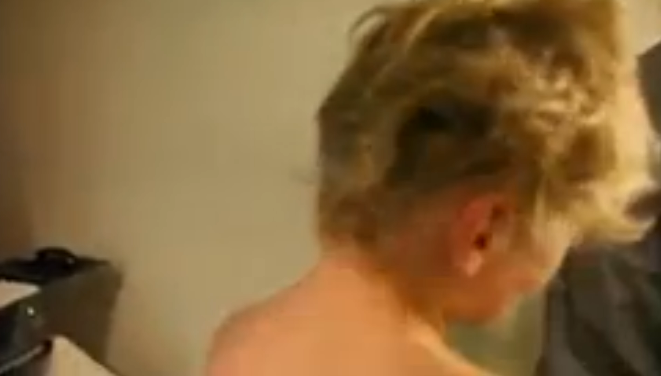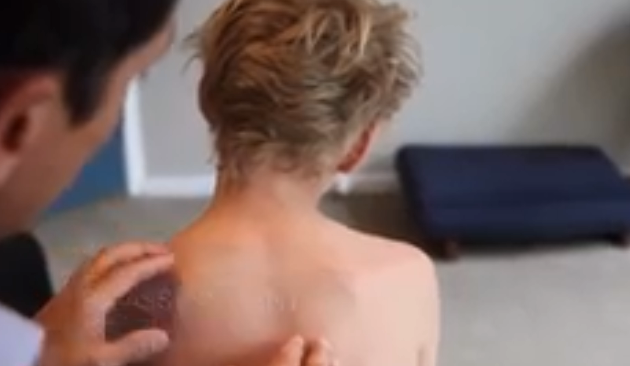Torticollis is also called as cervical dystonia or loxia or wry neck. The term torticollis is originated from the latin word’ tortus’ and ‘collum’, which means twisted and neck respectively. It is a condition caused due to involuntary contraction of the neck muscles which cause the head to turn or twist to one side of the body. It is usually a painful condition and can also cause uncontrollable head movements in the forward or backward direction. The twist causes the head to tip to one side and the chin to the other side.
This is a rare disorder which can occur to any age group of people and even to babies. Most often it is reported to occur in middle aged people and women are more prone to cervical dystonia than men. When present at birth it is called as Congenital torticollis, it is caused either if the baby’s head in the womb in not in the right position or injury to the muscles or blood supply to the neck. Symptoms become more prominent slowly and steadily and reach at a fairly stable state. In some cases it may be cured without any treatment while in other cases even surgery may also be needed. The type of torticollis can be classified depending on the type of twist in the neck:
- Retrocollis: hyper extension of neck and head in the backward direction
- Anterocollis: flexion of neck and head in the forward direction
- Rotational torticollis: the longitude become the axis of rotation of the head
- Laterocollis: tipping of the head towards the shoulder
Apart from the above described movements a combination of the above movements can also occur.
Torticollis can be classified into two types:
- Inherited: caused owing to changing genes
- Acquired: caused as a consequence of damage done to the muscles, upper spine, and nervous system
Idiopathic torticollos: when the exact cause is not known
Causes of Torticollis
The exact causes of torticollis are unfortunately still not yet known. But is predicted that some of the conditions which can lead to torticollis are nervous system infection, hyperthyroidism, tardive dyskinesia (taking antipsychotic medications may result in atypical facial movements), neck tumor, and vomiting or nausea medicines. Other contributing factors can be emotional difficulties, which may worsen the condition further more.
Sometimes due to difficult deliveries, new born babies can develop congenital torticollis due to the neck muscle damage. The sternocleidomastoid (SCM) muscle gets contracted and shortened. SCM muscle is responsible for the head movement (up, down, and side to side) and runs along both sides of the neck. The most common reason of the contraction of the SCM muscle, which causes the tilt of child’s head are the position of the baby in the womb, damage or trauma of the neck muscles during birth, and SCM muscle may get developed abnormally. For grown up children the causes may be muscle deformities of the upper spine, imbalance of the muscles in eye can also cause torticollis.
Torticollis Symptoms
The common symptoms of torticollis are:
- Headache
- Partial head movement
- Neck pain
- Head shake
- Shoulder becomes higher on one of the sides
- Neck muscles get swelled
- Neck muscles become stiff
- Head tilts on one side whereas the chin is tilted on the other side
- A pseudo lump or tumor may be present sometimes on the SCM muscles
- Asymmetries of the face and head
- Musculoskeletal problems are present sometimes
Diagnosis
Tests can be done to be sure about the actual cause of the head and neck pain. Physical examination of the parts of the body can be done as follows:
- Head is tilted to one side which is affected while the chin points to the other side
- In more severe cases the entire head may tilt to one side
- The SCM or neck muscles get shortened
Other tests that are done by machines are:
- MRI of the brain
- CT scan of the neck
- Electromyogram (EMG) may be done to find out which muscles are most affected
Torticollis Treatment
Treating congenial torticollis is done by stretching the muscles which are contracted in the neck. For small children passive stretching and positioning are often successful provided they are conducted within the first 3 months of the birth of the baby. If failed in this period, then for older children surgical methods may have to be adopted. When torticollis is caused due to damage to the spine, nervous system, or muscles then treatment is done on basis of the exact disorder cause.
- Stretching neck muscles and neck brace can be helpful with muscle spasms
- Massage, Traction, heat application to the cervical spine may help in relieving the pain in head and neck
- Anticholinergic drug baclofen and other medications may be used
- There is no treatment for cervical dystonia but it may cure by itself.
Torticollis Pictures




